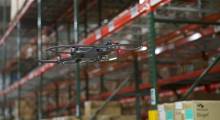To say the pandemic has accelerated e-commerce might be the understatement of the decade. Everywhere you look data validates the idea that Americans are more comfortable than ever with point, click, buy—and it’s not stopping any time soon.
According to Department of Commerce, e-commerce growth in the U.S. market was already up by 14.9% in 2019 year over year. The pandemic is adding to the online buying increase, with a recent analysis by Adobe Systems finding that during the two early months of the Covid-19 disruption—April to May—consumers spent $153 billion online, up 7% from online spending during the 2019 holiday season that ran from November to December.
The latest Department of Commerce numbers show e-commerce growing by 30% during the first half of 2020—compared to the same period in 2019—while e-commerce sales now make up about 16% of all U.S. retail sales, up from roughly 12% during the first quarter.
The disruption has seen innovation thrive in 2020. Ship-from-store and curbside pickup have pushed micro-fulfillment centers—smaller sites that leverage goods-to-person automation to fill online orders closer to customers—from a fringe concept to mainstream.
Warehouse/DC operations and materials handling automation providers are not standing still. Starting on page 26, senior editor Roberto Michel takes a closer look at the supply chain challenges brought on by micro-fulfillment as well as how automation vendors and warehouse/DC operations are working to meet this new, complex demand.
“The thing that strikes me is that the trend involves much more than whether or not one can ‘shrink down’ goods-to-person automation for the store level,” says Michel. “I think that clearly you can, as there are numerous vendors lining up to do just that.”
According to Michel, automation characteristics like high storage density, rapid access to totes and high uptime are important to this process, but vendors point to the need to resolve other supply chain issues in tandem with the technology application to make this all possible.
“The trickier part is more around the strategic decisions the grocery or omni-channel retailer needs to make, such as does the retailer want to pursue a ‘hub-and-spoke’ model or a ‘dark store’ model in which one automated facility services a densely populated area and perhaps a ring of nearby non-automated stores,” says Michel.
As Michel points out, the questions will vary by sector and specific location of the center. For example, will it be best for grocers to place micro-fulfillment automation for fast-moving goods within a store that also offers a more conventional shopping experience for fresh foods? Keep in mind, operations are also going to have to figure out how to efficiently replenish the goods in these smaller, more dispersed locations.
“The micro-fulfillment automation hardware itself tends to capture our attention because it looks cool and involves robotics,” adds Michel, “but the long-term success of micro-fulfillment may hinge as much on network design and inventory processes across sites as it does on automation technology.”
About the Author
Follow Robotics 24/7 on Linkedin
About the Author
Follow Robotics 24/7 on Linkedin
Article topics
Email Sign Up















